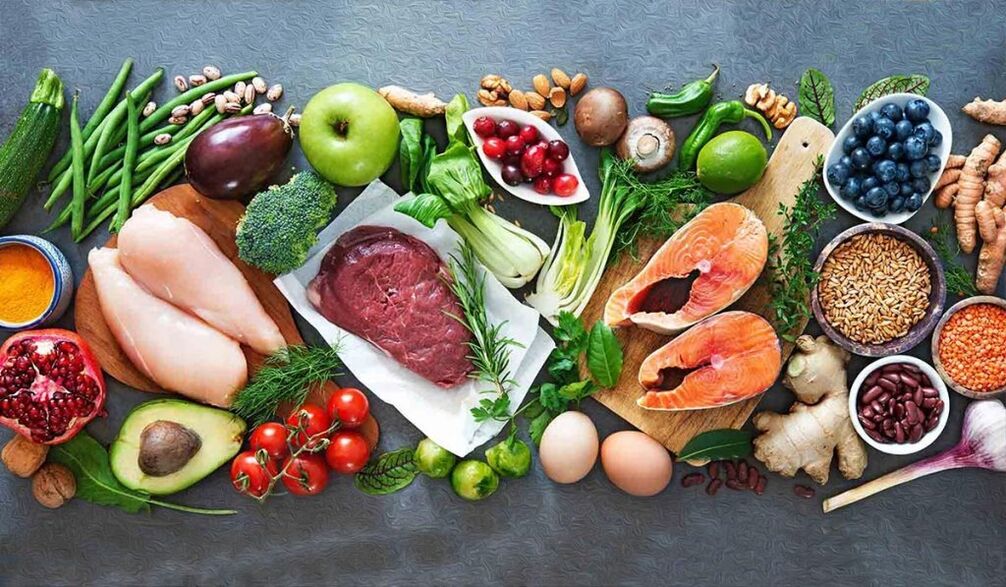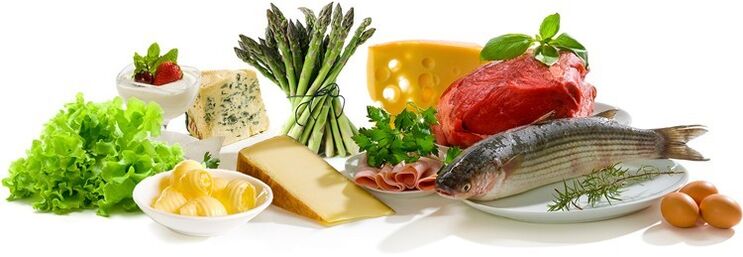
Technically, carbohydrates can be defined as a group of organic compounds found in foods and living tissues of animals and plants. These compounds, also known as carbohydrates, are the main source of energy for the body and can be divided into two main categories - simple carbohydrates and complex carbohydrates.
simple carbohydrates
Simple carbohydrates have a basic molecular structure, usually one or two parts. They are easily absorbed by the body when taken orally and give off a sudden burst of energy followed by a similar sudden drop when all the sugar is used up.
A good source of simple sugars are refined and processed carbohydrates, which are absorbed more quickly into the bloodstream. They provide energy faster than natural sugar, have a lower glycemic index.
However, many of these refined sugars are used only as flavor enhancers in processed foods and have little or no nutritional value. That's why they're called empty calories.
Simple carbohydrates are also found in natural sources such as fruit, honey, and dairy products.
Complex carbohydrates
Complex carbohydrates, on the other hand, have a more complex molecular structure consisting of three or more parts. They take longer to break down into glucose for energy. Foods that contain complex carbohydrates also contain fiber, minerals, and other nutrients.
Because complex carbohydrates are broken down slowly, energy lasts longer than simple carbohydrates provide. Sources include whole grains and their products such as cereals, oats, rice, and pasta. They are also found in potatoes, lentils, beans and peas.
Once in the body, carbohydrates will be digested and broken down into glucose, which is a simpler and easier to absorb form. It is then transported through the bloodstream to the body's organs and muscles, where they are broken down for energy. These organs include the heart, kidneys, brain, and lungs.
Why You Should or Shouldn't Eliminate Carbohydrates
Diet has become a widely discussed topic around the world, and any such discussion usually centers on one thing - carbohydrates. For years, nutritionists have been torn between advising their patients to avoid carbohydrates entirely or to eat only the good stuff. As a result, there are many diets available to everyone, including the famous Keto and Atkins diets.
To really understand whether to cut back on carbs, we're going to look at the benefits and dangers of eating carbs.
Favorable
The most important function of carbohydrates in the body is to provide energy. They are the body's main source of supply.
Most natural food sources of carbohydrates, such as whole grains and vegetables, also contain significant amounts of fiber, which not only promotes good gut health but also reduces the risk of problems. other health problems such as cholesterol accumulation.
Additionally, when fats and fatty foods are replaced with carbohydrates like whole grains, they can help reduce fat intake, allowing you to maintain a healthy weight. It helps fight obesity and other health problems associated with being overweight.
Flaws
The main disadvantage of eating carbohydrates is weight gain. As mentioned earlier, carbohydrates are broken down into glucose, which is further broken down to produce energy. Excess glucose builds up in organs and muscles as fat, causing weight gain. It is the basis for many reduced-carbohydrate diets.
Carbohydrates are also dangerous for people with blood sugar problems like diabetes. When digested, they raise blood sugar levels, and people with these conditions may not have well-controlled sugar levels.
There is even a risk of sugar addiction. The effects may be similar to those of common street drugs.
For those concerned about weight and blood sugar, the best alternative to staying healthy may be to stop eating carbohydrates and replace them with more important energy sources, such as protein.
Foods to Avoid on a Low Carb Diet
Bread and cereals
Bread is widely consumed all over the world. It is difficult to find a household that does not use bread production. Refined or made from whole grains, bread is mostly carbohydrates. A slice of regular white bread can contain up to 14g of carbohydrates, while a slice of whole grain bread can contain up to 17g. This definitely makes it a bad choice for a low-carb meal.

some kind of fruit
This may sound rather ironic, as some of the healthiest people in the world swear by them. Fruits are a great source of vitamins and fiber, and their health benefits are far-reaching. Some studies even show they can reduce the risk of cancer and heart disease.
However, some fruits are high in carbohydrates. These include bananas, apples, grapes and mangoes. The sweeter the fruit, the more sugar it contains.
Vegetables with a lot of starch
Vegetables are also an important component of many diets, as they enjoy being packed with vitamins as well as being high in fiber, which not only aids digestion but also aids weight loss and helps with blood sugar control.
However, some vegetables are high in starch, making them more digestible carbohydrates than fiber. These include corn, potatoes, sweet potatoes, and beets.

Pasta
Pasta, like bread, is a staple food for many people on the planet. Not only is it cheap, but it's also easy to prepare and can go well with many other dishes. However, many people concerned about their weight decide to cut back or avoid pasta altogether due to the sheer amount of carbohydrates it contains. Whether it's whole grain or processed, it's a bad choice for people looking to cut back on carbs. A healthy alternative would be shirataki noodles or vegetables.
Dry breakfast
The ideal breakfast for at least half of the country's adults and children would be a bowl of sugary cereal. While it stands to reason that grains (especially whole grains) provide the body with much-needed fiber, it's important to note that they contain more sugar than fiber. For example, a half cup of oatmeal contains 25 grams of carbohydrates and only 4 grams of fiber.
Foods for a low-carb diet
The main goal of many low-carb diets is to lose weight and improve overall health. The goal is to replace carbohydrates with other sources of energy, usually protein and healthy fats. The basic rule is that if the body receives a minimal amount of carbohydrates, it will not store them as fat. Here are some foods you should include in your low-carb diet for best results:
- Lean Meat Protein - Refers to lean meats like beef, pork, chicken, lamb, etc. v.
- Fish
- Green vegetables like spinach
- Dairy products are high in fat, such as cheese and butter
- Nuts, including sunflower seeds and walnuts
- Egg
- Low-carb fruits and berries

Popular low carb diets
Atkins Diet
The Atkin Diet focuses on weight loss and aims to consume proteins and fats that are high in carbohydrates. This idea was spread by Dr. Robert Atkins, who wrote a book about it in 1972.
Initially, the Atkins diet was considered unhealthy and even discouraged by many other nutritionists due to the high amount of saturated fat that its followers would consume. However, over time, it has gained popularity worldwide, and many studies have confirmed this. It is very beneficial for people who want to lose weight or lower cholesterol and blood sugar levels.
The Atkins diet consists of four phases:
- The warm-up phase: involves eating less than 20 grams of carbohydrates per day for at least two weeks. It serves to start the weight loss process, and also includes the absorption of a large amount of protein and fat.
- Continuous Weight Loss: This focuses on balancing the lost weight and getting it back to a steady rate. This includes introducing small amounts of carbohydrates into the diet slowly.
- Pre-maintenance: This is when a person is close to reaching their weight goal and they should slow down the weight loss process. This includes slowly adding carbs to the diet until weight loss begins to slow down.
- Maintenance. This phase involves a lot of balance, in which a person eats as many carbohydrates as possible without gaining weight.
LCHF Diet
Primarily focused on weight loss, the LCHF diet is based on the concept of eating low carbohydrates and high amounts of fat. It is also practiced for a number of other health reasons, such as reducing the risk and consequences of type 2 diabetes, heart problems, and Alzheimer's disease.
The LCHF diet, also known as the Banting Plan (named after William Banting, who played a key role in its popularity), involves eating whole and unprocessed fatsand moderate protein with minimal carbohydrates. Other diets like the ketogenic and Atkins diet are also based on this rule, making them minor variations of the LCHF diet.
There is no standard meal plan for this diet as it must be tailored to individual needs. It is recommended to avoid any carbohydrate-rich foods such as bread and pasta, as well as other sugary and starchy foods.

Risks of a low-carb diet
While low-carb diets are ideal for weight loss (and other proven health benefits), there are also some significant risks that anyone looking to start with should not. skip.
Eating little or no carbohydrates increases the risk of dying young, especially in adulthood. This has been proven by many meta-analyzed studies from around the world.
These diets can also significantly increase mortality, as seen in numerous studies in which affected individuals got at least 50% of their energy from carbohydrate-rich foods.
Let's summarize
Carbohydrates can be the body's main source of energy, but they can also be the cause of problems like weight gain and other health problems caused by overconsumption.
Therefore, experts have come up with low-carb diets that aim to replace them with fat and protein as an energy source. Diets like Atkins and LCHF work on the same principle: eat fewer carbohydrate foods and more protein and fat foods. Different meal plans and different phases are often the only differences between such diets. For example, a low-carb and keto diet. They are associated with a number of risks, such as an increased risk of premature death.
Therefore, it is wise to fully understand your individual needs and consult your doctor before starting a low carb diet.

































